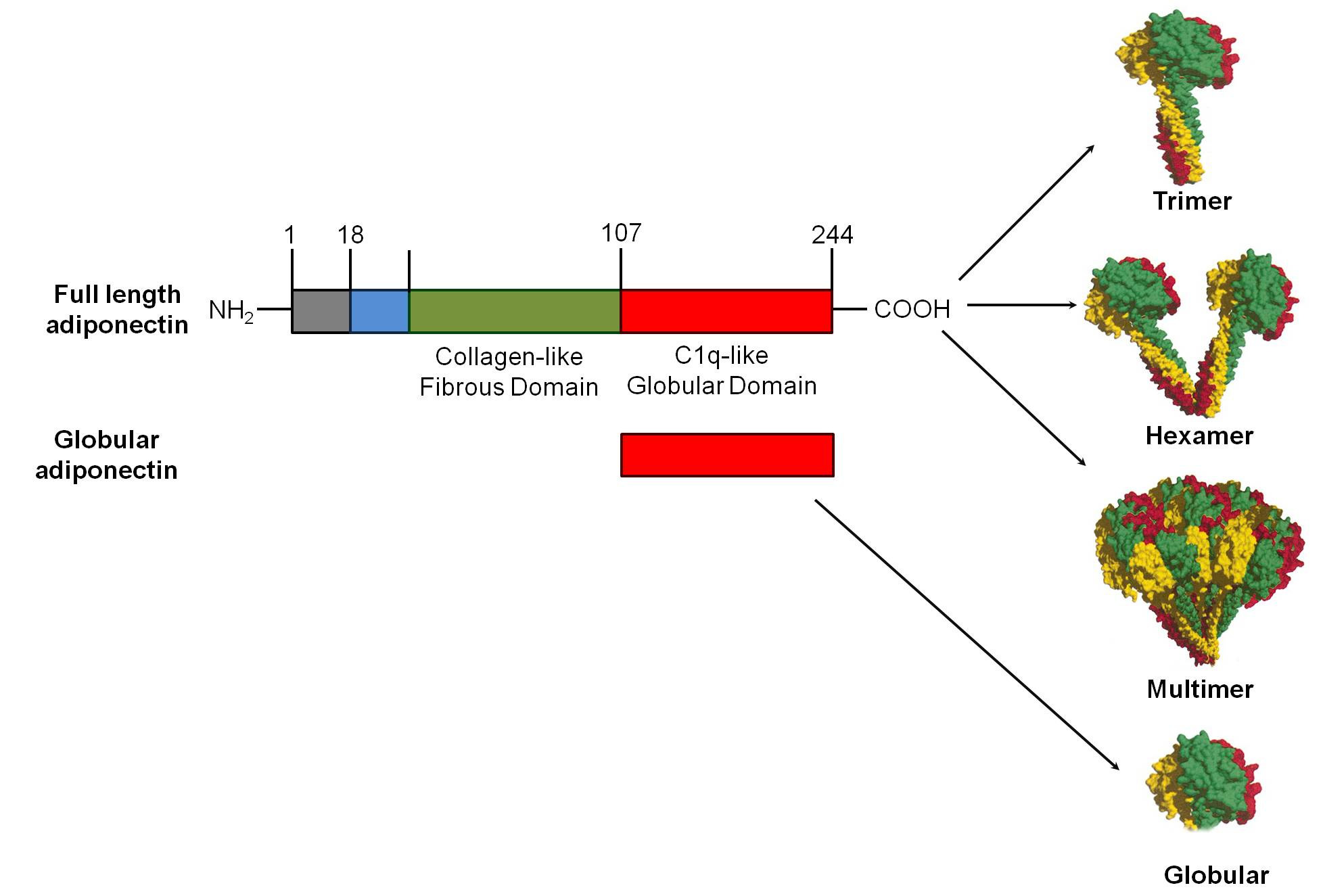Adiponectin
The conditions of obesity and overweight pose a major risk for a number of comorbidities, including clinical syndromes resulting from atherosclerotic disease.
Adiponectin is known as an important adipokine and is involved in various biological processes in the human body. The change in the profile of serum adipokines in obese subjects, such as levels of adiponectin and pro-inflammatory cytokines, are proposed as a contributing factor to the development of cardiometabolic alterations[1].
Adiponectin acts as a protective factor for cardiovascular disease, increases insulin sensitivity and has a beneficial effect on postprandial glucose and lipid metabolism[2]. Its levels are lower in obese people compared to the non-obese, as well as in individuals identified as insulin resistant; patients with T2DM, high blood pressure and particularly patients with coronary heart disease[3].
Adiponectin is a 30 kDa protein with a C-terminal globular domain and a collagen-like N-terminal domain[4].
Adiponectin, a product of the APM1 gene, is a protein composed of 244 amino acids, also known as GBP-28 (galatin binding protein-28), ADOPOQ and ACRP30. This protein is largely secreted by adipocytes, although it can also be secreted by cardiomyocytes, hepatocytes and placenta at lower concentrations[5].

Domains and structure of adiponectin
Full-length adiponectin is composed of 244 amino acids, including a collagen-like fibrous domain at the N-terminus and a C1q-like globular domain at the C-terminus. In circulation, adiponectin forms low-molecular weight (LMW) homotrimers and hexamers, and high-molecular weight (HMW) multimers of 12–18 monomers. A smaller form of adiponectin that consists of globular domain also exists in plasma in negligible amounts. Each adiponectin subunit in the basic trimeric building block represented in a different color[6].
Adiponectin is mainly produced from white adipose tissue and specifically in mature adipocytes.The concentra-tion of circulating adiponectin in plasma is very high (2 to 30 μg/mL)[7,8].
Adiponectin is a key mediator of systemic insulin sensitivity and glucose homeostasis. These effects are achieved through a diverse range of important targets, including liver, pancreas, cardiac myocytes and immune system, and the adipose tissue itself. The main metabolic effects of adipo-nectin are suppression of hepatic glucose production and modulation of suppressing inflammatory responses in other cell types, including macrophages[1].

Contact Us
Follow us
 Wechat
Wechat

